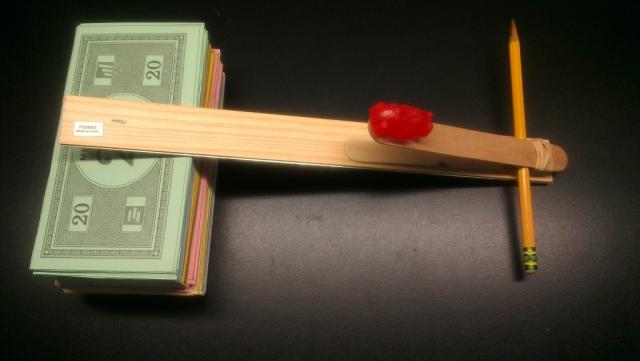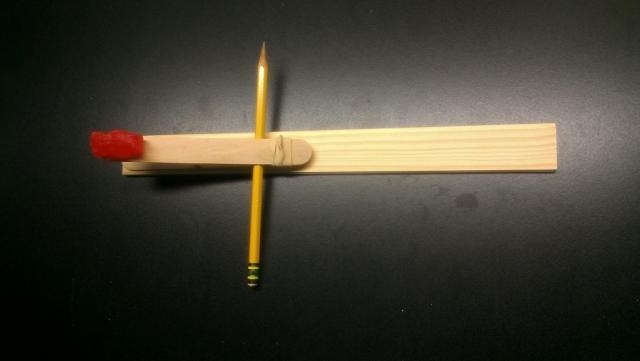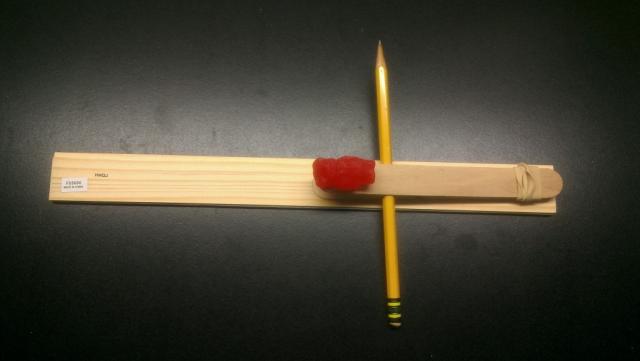Now that we’ve settled on a 2-level factorial design, we’ll take a look at some of the different 2-level designs that we can run with 5 factors. Minitab gives us 3 options in design of experiments: a full factorial, a half fraction and a quarter fraction. In the statistical world of DOE, we say these designs offer different "resolutions" to an experiment.
You can think of choosing a statistical resolution in DOE as similar to choosing between cameras with 10 or 20 megapixels. In both designed experiments and with cameras, higher resolution is generally better. However, depending on your goal, you'll reach a point where more resolution doesn’t make sense.
The detail that statistical resolution adds in design of experiments has to do with which effects that you can ndividually assess. Let’s consider the idea using just three of the gummi bear experiment factors:
• Angle of catapult
• Position of catapult on the launch ramp
• Position of fulcrum
Limitations of a Resolution III Designed Experiment
With three factors, we can choose to conduct either a full factorial, full-resolution design, or a half-fraction resolution III design. If we choose the resolution III design, the design is going to use fewer runs, but two-factor interactions will assessed at the same time as main effects.
That is, we will launch gummi bears at only four out of the possible eight combinations of factors:


In the photos above, Notice that when one end of the launch ramp is elevated to make the high angle, we changed the position of the fulcrum and the position of the catapult at the same time! Look below, and you'll see we also change the position of the fulcrum and the position of the catapult at the same time when we don’t elevate one side of the launch ramp:


That means that when we look at the results, we won’t really know for sure if the difference we’re seeing in distance is due to the change from high angle to low angle, or because the effect of the position on the launch ramp depends on how far the fulcrum is from the rubber band. Maybe the change in angle is significant...or maybe the interaction between the position on the launch ramp and the distance from the rubber band to the fulcrum is significant...or maybe both effects matter. We don’t collect enough data in the resolution III design to know.
When Is a Resolution III Designed Experiment Useful?
So why run a resolution III design? Because if we suspect that none of the interactions have a large effect on how far the gummi bear flies, then it would be a waste of time and effort to collect the data needed to assess these interactions. If we choose the resolution III design, we think that there’s a good possibility that among the 7 effects we can estimate, only the catapult angle, the catapult position or the fulcrum position will matter, but not the interactions between them.
If we were getting ready to run our 5-factor experiment and we didn’t expect any interaction effects to be significant, we could consider a resolution III half-fraction design. Or, we could use a full factorial, full-resolution design, which would assess both the individual factors and also the two-way interactions. In fact, not only can you tell the effect of changing the angle apart from the effect of the interaction between the position on the launch ramp and the distance from the rubber band to the fulcrum, you can even tell whether the effect of the interaction depends on the angle! The data collection takes more time and effort than a resolution III design, but that’s the tradeoff you need to consider in choosing a DOE resolution.
In general, a good goal for design of experiments is to learn as much as possible from the smallest amount of data. I’m going to start the gummi bear experiment with the resolution III design, and use a follow-up experiment to add data if I need it.



